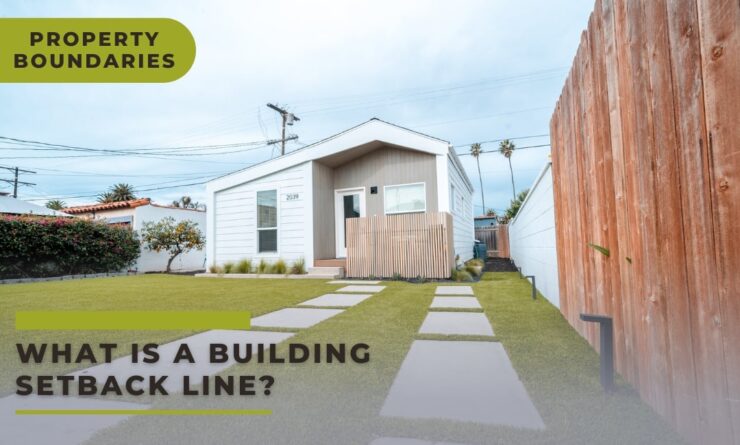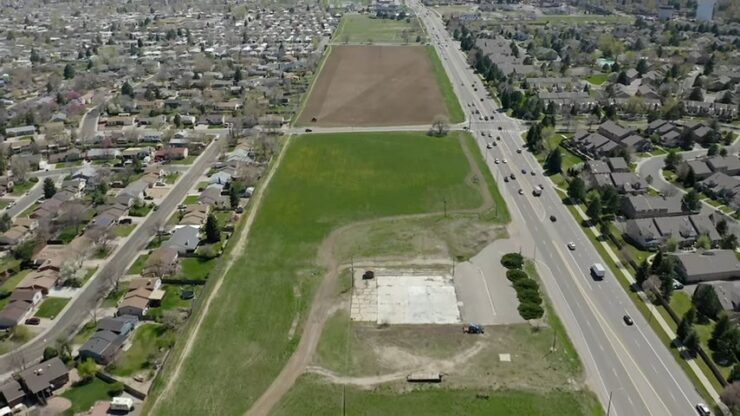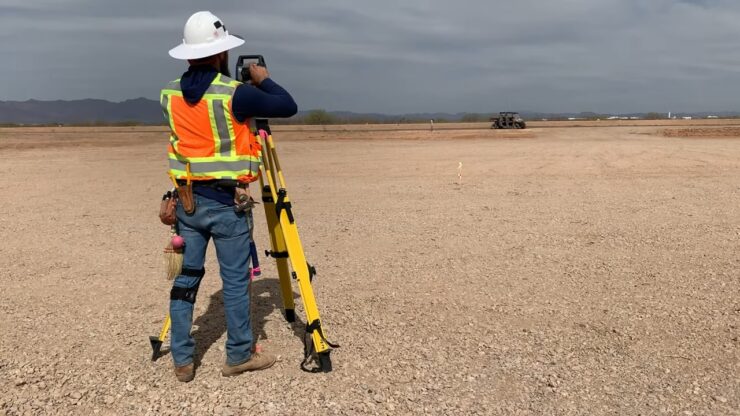When you’re giving your home a makeover or starting from scratch, think of building setbacks as the “personal space” your house needs. Just like we sometimes need a little distance from others, our homes need their own space too!
So, what’s a setback? Imagine it as an invisible boundary around your home. It ensures that houses aren’t built too close to each other or too near the street.
It’s like the buffer zone in a personal bubble, taking into account things like nearby rivers, wetlands, and roads. And it’s not just for big houses! Even if you’re thinking of adding a cozy granny flat or a backyard office, these rules apply.
The space each building needs can differ a lot. It’s like how some people are okay with a friendly pat on the back, while others prefer a wave from a distance. This “personal space” varies based on many factors, and it can be a tad tricky to figure out at first. Whether it’s a bustling commercial building or a quiet residential home, these rules are there.
If you’re dreaming of revamping your home, it’s crucial to know how much room you have to play with. Maybe you’re thinking of adding an extra room or expanding your living space? We’re here to help you navigate these rules, understand why they’re essential, and how they change based on different property types. Think of it as understanding the “comfort zone” of your home!
Breaking Down Building Setbacks
Imagine you’re setting up a board game on a table. You need to ensure each piece has its own space, and nothing is too close to the edge. Similarly, when building or renovating a home, you need to consider building setbacks. Let’s break it down:
- By Property Shape
- Square Sections: If your property is like a big square, you’ll have clear front and backyard spaces. You can comfortably fit your dream home without hugging the edges too much.
- Long & Unique Shapes: Got a property that’s more like a long rectangle or a quirky shape? No worries! Sometimes, you can build a wall right up to the edge. This way, you make the most of what you’ve got, without squeezing your home into a tight spot.
- Height Matters
- Single vs. Double Storey: If you’re going for a two-storey home, the rules might change a bit. The second floor might need to step back a bit more than the ground floor. Why? It’s all about sunshine! You don’t want to block your neighbor’s sunlight by having a towering wall right next to their window.
- Neighbor Count
- Spacious Suburbs: If your neighborhood feels like a relaxed countryside with big plots, you can spread out a bit more. There’s room to breathe!
- Busy Burbs: In bustling areas with houses packed close, you’ll need to be more mindful. Think of shared driveways, utility workspaces, and ensuring everyone gets a bit of the view.
- Front vs. Back & Nearby Parks
- Front Yard: Typically, homes have a smaller front yard. It’s like the welcome mat of your home.
- Backyard Priorities: The backyard is where the magic happens! It’s usually bigger, offering more privacy. Perfect for BBQs, gardens, or a pool.
- Near a Park?: Lucky you if your property is next to a public reserve! But remember, this might change how close you can build to that edge.
In a nutshell, building setbacks ensure every home gets its fair share of space, light, and privacy. Whether you’re building a mansion or a cozy cottage, these rules help make neighborhoods harmonious and pleasant for everyone.
The Significance
Imagine you’re at a concert, and everyone is standing way too close. It’s uncomfortable, right? Building setbacks are like the unspoken rules of personal space, but for houses. Let’s dive into why they’re so crucial:
- Community Harmony:
- Neighborly Love: Setbacks ensure every home has its breathing space. Think of it as being considerate. If you’re building a towering two-storey home, you wouldn’t want it casting a shadow over your neighbor’s sunny garden, would you? Setbacks ensure everyone gets their fair share of sunlight and privacy.
- Consistent Look: With everyone following the same rules, neighborhoods have a more uniform and organized appearance. It’s like everyone agreeing on a dress code for a party!
- Safety & Accessibility:
- Infrastructure: Our homes are built over a network of pipelines and electrical lines. Setbacks ensure there’s enough room to access and repair these utilities without disturbing your home.
- Emergency Access: In case of emergencies, setbacks ensure there’s enough space for emergency vehicles and personnel to access properties.
- Environmental Care:
- Nature’s Buffer: Setbacks play a role in environmental conservation. They help in preventing soil erosion, especially if your property is near water bodies.
- Preserving Green Spaces: They also ensure that natural habitats like wetlands and parks are undisturbed, maintaining the balance of urban and green spaces.
- Local Governance:
- Tailored Rules: Different places have different needs. That’s why local governments and councils decide on setbacks. They consider the unique characteristics of each area, ensuring the rules fit just right.
Who’s in Charge and How to Check
Who’s the Boss of Setbacks?
- State’s Say: The state government holds the reins when it comes to setting the rules for building setbacks. They consider various aspects of your property, from its classification and location to its shape. For folks in Sydney, the NSW Government is the go-to authority.
- Old vs. New: If your building has been standing tall for years, you’re in the clear. But if you’re thinking of adding a new wing or starting from scratch, you’ll need to play by the rules. Some small features, like bay windows or chimneys, might get a pass, but it’s always best to double-check.
- Guidance is Gold: Before you lay the first brick, get clarity. Knowing the rules can save you from future headaches.
How to Measure Up?
- Know Before You Build: Imagine building your dream home and then being told to tear a part of it down! That’s what could happen if you overstep the setback boundaries. So, it’s crucial to get it right from the start.
- Online Resources: The NSW Government website is a treasure trove of information on setback regulations. Whether you’re curious about the rules for a specific property type or a particular location, it’s all there. Plus, you can dive deep into planning details for individual properties.
- Sketch it Out: Got your property’s dimensions? Great! Start by sketching out a rough plan. It’ll give you a bird’s eye view of what’s possible.
- Ground Reality: Once you’ve got a plan, head outside with a tape measure. Planting stakes in the ground can give you a tangible sense of your building’s potential footprint. It’s like drawing the lines on a sports field, showing you where you can play.
Adjusting Building Setbacks: Is it Possible?
Think of building setbacks as the “rules of the game” for constructing on your property. But like any game, you might wonder if there’s a way to bend the rules a bit. Let’s explore:
Can You Stretch the Boundaries?
- Fixed Lines: Generally, the setbacks set for your property are like the boundary lines on a sports field. You’re expected to play within them. If you’re not buying more land, you usually can’t build beyond these lines.
- Exceptions Exist: While the rules are strict, there are some exceptions. Depending on your building’s specifics, its relation to neighbors, and how much you wish to adjust, you might be able to tweak the setback.
What’s the Process?
- Council’s Consent: Want to change your setback? You’ll need to knock on the council’s door. They hold the power to grant permissions for such changes.
- No Guarantees: Just because you ask doesn’t mean you’ll receive. The council will weigh various factors, like how your proposed change might affect parking or sunlight for neighboring properties.
- Legacy Homes: If your home has been standing for decades, it might already stretch beyond today’s setback rules. If you’re thinking of renovating or rebuilding, this is crucial to remember. You might be grandfathered into old rules, but new constructions will likely need to adhere to current regulations.
- Freedom of Choice: Remember, the setback is the maximum limit, not a mandate. If you fancy a cozier, smaller home, you’re free to build well within those boundaries.
FAQ
How close to the property line can I build an addition?
The distance you can build an addition close to the property line varies based on local regulations and zoning laws. It’s essential to check with your local municipality or planning department for specific guidelines.
What does BSL stand for on a survey?
BSL typically stands for “Bench Mark Level” in surveying, which refers to a fixed reference point of known elevation.
What does CP mean in surveying?
In surveying, “CP” often stands for “Control Point,” which is a known location used as a reference point for survey measurements.
What is BS and FS in surveying?
In surveying, “BS” stands for “Backsight,” which is a reading taken on a point of known elevation. “FS” stands for “Foresight,” a reading taken on a point of unknown elevation.
What does RL mean in surveying?
“RL” in surveying stands for “Reduced Level.” It refers to the height of a point above a reference datum, often used to represent elevations on a site.
What does PT mean in surveying?
In surveying, “PT” typically stands for “Point,” especially in the context of designating specific locations or reference points on a survey.
What does PS mean in surveying?
“PS” in surveying can stand for “Permanent Survey,” which refers to a long-term or permanent survey marker or point.
Final Words
Building or renovating a home is more than just bricks and mortar; it’s about understanding the space, respecting boundaries, and ensuring harmony in the community. Setbacks, while technical, are the unsung heroes that ensure our neighborhoods remain pleasant and functional.
As you embark on your construction journey, remember that these rules, though seemingly restrictive, are designed with the best interests of homeowners and the environment in mind. By understanding and respecting them, you’re not only building a home but also contributing to a harmonious community.

















